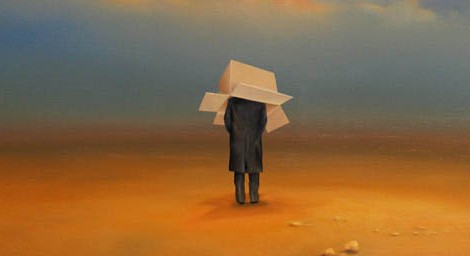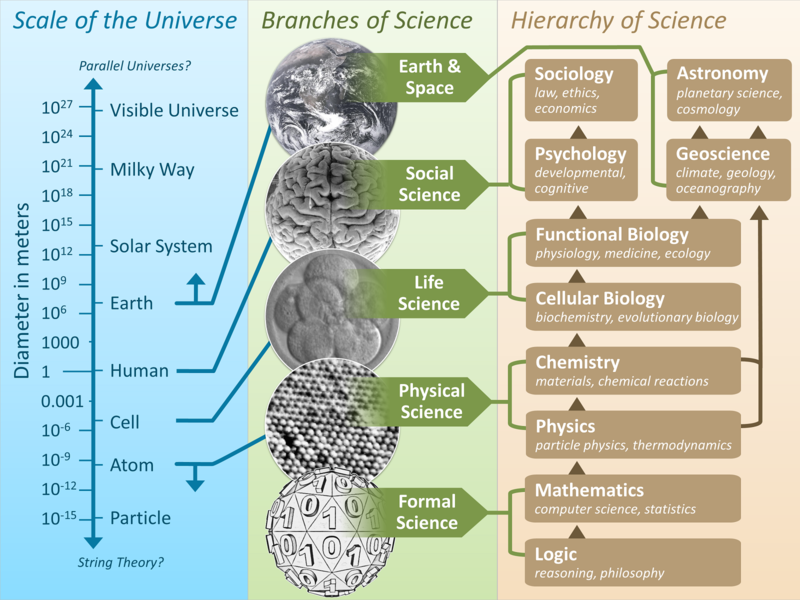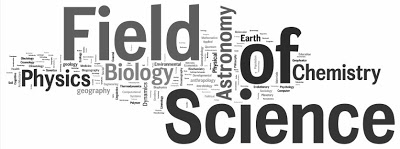
Out of the box science
Science made tremendous progress in the last three centuries. We understand the world better and more precisely than we have ever understood it, and the broadness of human knowledge is overwhelming. But just like everything good, also this has a price. In ancient days, there were polymaths like Leonardo who were able to produce original work in practically all knowledge-related human endeavors. There were mathematicians like Euler or Gauss who could research all sub-fields of mathematics. Today, it is common for scientists to narrow their field of expertise so much as otherwise it is easy to drown in the vast ocean of knowledge. The price we pay for our great knowledge as a species is that as individuals we will never be able to comprehend it.
I like to depict science as being made out of boxes. Each box represents a different field: physics, biology, mathematics, chemistry, etc. In ancient days, the boxes were just one interconnected box (the 'blob of human knowledge'). Today, the boxes are pretty separated. It is clear however that there is some inter-connectivity between the boxes. For example, mathematics is very connected to physics. Another example is the relationship between physics and biology, which together make the sub-field of biophysics. But this is not all. There are some fine details in this abstract 'science as a set of boxes' view. You can zoom-in each box to discover that each box is in fact constructed of many smaller boxes. The box (field) of physics is made out of classical mechanics, thermodynamics, the theory of relativity, quantum theory and so on. One of those boxes is the box of biophysics, which in fact lies in the intersection of the two bigger boxes of physics and biology. So each one of these smaller boxes may be connected to other smaller boxes, as well as be made out of even smaller boxes (e.g. classical mechanics can be divided into Newtonian mechanics, Lagrangian mechanics, Hamiltonian mechanics, etc.)
But this picture of science is not still. It evolves like a growing organism. At the time of Galileo science was strongly inter-connected, natural philosophy they used to call it. As time passed, the big box of natural philosophy became even bigger. Slowly it started tearing apart and separating to smaller boxes, these are the fields of science as we know them today. With time, each box increased and became more and more crystallized from smaller boxes that form the different sub-fields. Later, the distance between the different boxes has increased as well to form what seems like almost different entities. These entities perhaps appear very different, but at their core are similar notions that evolved to different terminologies.
Nowadays it is virtually impossible, or at the very least very difficult, to master a box. For example, mathematics has been developed for nearly 3,000 years and mastering it is hard. Really hard. It is easier to master younger fields. The smaller the box is, the less time it will take you to master it. This, together with the large separation between fields, is what caused the specialization of fields which we exhibit today.
You may utilize Thomas Kuhn's ideas on the structure of science to further understand what this model implies about doing science. Kuhn described the scientific endeavor as being constructed of a cycle with three repeating stages:
- Normal science: what we do most of the time.
- Pre-revolution science: is the stage in which a fundamental problem appears and is investigated (e.g. the issues with blackbody were the pre-quantum revolution).
- Revolutionary science: is when scientific revolution occurs, like the development of quantum theory in the 1920's.
Kuhn's way of thinking about science reflects itself very naturally in the science as a box metaphor. Normal science means trying to expand the box from the inside. We use the set of tools, terminology, theorems and skills that comprise a box to further expand it. Saying that we do it from the inside means that we don't deviate from the contemporary theories to do so. Unfortunately, science became so vast that in most practical cases, we don't even try to expand a box. We try to expand a sub-sub-...-sub box. For example, we may use want to find new solutions of Einstein's equations to expand the sub-sub-box of mathematical general relativity which resides in the sub box called general relativity which lies in the box of physics. This is a highly specialized approach.
Pre-revolution science is exactly that time in which thinking from inside the box leads to contradictions or internal conflicts. This is the time when we are not sure that the box we are using is appropriate at all to solve the problem we wish to solve, and urges us to think outside of the box.
In the box analogy, thinking outside of the box is not a mere saying! Thinking outside of the box raises to a literal statement about the way in which some rare individuals do science. Thinking outside of the box means trying to expand the box from the outside, and in particular it is an essential part of revolutionary science. There are at least two different ways to think outside of the box.
The easy way to think outside of the box it is to leave your box and study it using any of the other boxes or sub-boxes. The other boxes typically include new techniques, skills, and knowledge that when implemented on your original box reveals a new way of thinking of a problem. Potentially, by thinking of a problem with a new language and a new set of tools it may be easier to solve it. An example for this would be to use advanced mathematics (which is not available for most biologists) in order to solve an open problem in biology. The advantage of knowing this advanced mathematics (knowledge from the box of math) can give a scientist a huge advantage in solving problem in his or her own box (the box of biology in this case). So in this example, the biologist uses the box of mathematics to solve an open problem which is formulated in his or her box.
But of course, this is not the only way to think outside of the box. The hardest and sometimes most insightful way to expand the box from the outside is by actually living in the void between the boxes. This is the brave attempt of trying to comprehend the short-falling of a given theory using a critical external viewpoint. If this external viewpoint doesn't directly leverage the knowledge in other fields (boxes), we are really in outer space. This doesn't mean that we left science, it just means that we don't use any of the existing boxes to study it. Of course, thinking out of the box is hard. It usually requires a very thorough understanding of the content of your box. You don't only have to know your box, you have to be able to navigate through it swiftly. Get from one point of the box to another, and thoroughly understand the inter-connectivity of your box at a fundamental level. Perhaps even its connectivity with other boxes. This type of out-of-the-box thinking includes the work of explorers such as Albert Einstein (who developed relativity theory from first principles), Newton (who developed calculus and his mechanics way beyond the scope of the former Aristotelian mechanics). Remember - when your box gets too small to contain you, out-of-the-box thinking is essential!
The bigger the boxes are, the more advanced science is. Ironically though, the bigger and more separate we make the boxes, the more difficult it is for science revolutions to start. By expanding science and specializing in sub-boxes, the more we separate our work from the work of others. In science today, the distance between the boxes is expanding analogously to the distance between galaxies...

--
Thanks Jorge Mario Ramirez for an interesting discussing in the Swiss alps which led to this post.

Recent Comments